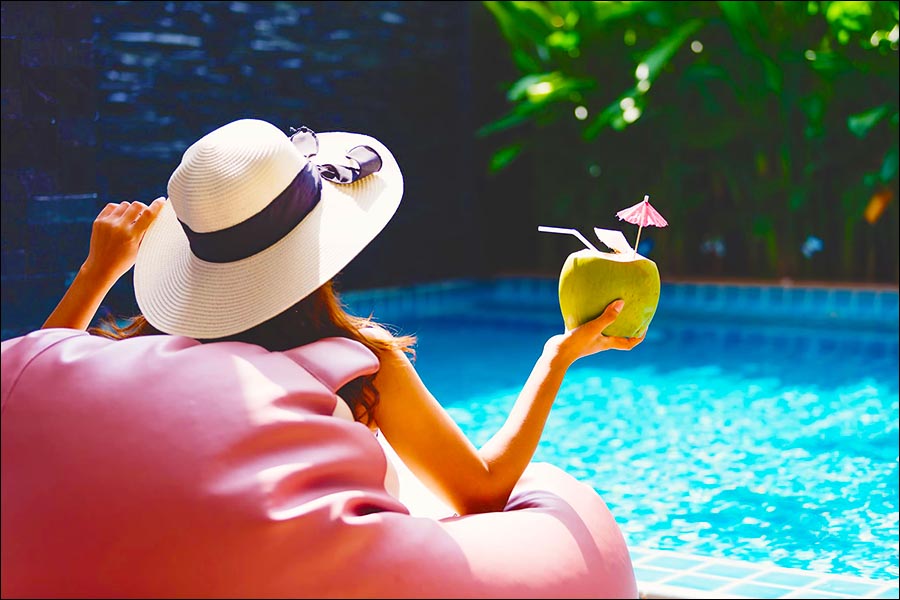Helpful Pool & Spa Advice

Are Airbnb Hot Tubs Safe & Sanitary? A Closer Look.
When booking an Airbnb with a hot tub, one of the key concerns for many travelers is whether the hot tub is safe and sanitary. Unlike hotels, which are subject to strict health and safety regulations, Airbnb properties often rely on individual hosts to maintain their amenities. While many hosts take great care in ensuring their hot tubs are clean and well-maintained, there is still a level of uncertainty about the safety and cleanliness standards being met consistently. Understanding the potential risks and how to mitigate them can help guests make more informed decisions about enjoying a hot tub at an Airbnb rental.
The safety and sanitation of an Airbnb hot tub primarily depend on the host's maintenance routine. Proper hot tub care requires regular cleaning, sanitizing, and monitoring of water chemistry to ensure it is free from harmful bacteria and pathogens. If a hot tub is not adequately maintained, it can become a breeding ground for bacteria such as Legionella, which can cause Legionnaires' disease, or Pseudomonas, which can lead to skin infections. While many hosts are conscientious and follow recommended guidelines, there is no universal standard across Airbnb properties, which means that practices can vary significantly from one host to another.
To ensure a safer experience, guests should take proactive steps before using an Airbnb hot tub. Checking the listing description and reviews for information on the hot tub’s maintenance routine can provide valuable insights into how seriously the host takes sanitation. Additionally, asking the host specific questions about their cleaning schedule, water treatment procedures, and whether they use professional services can give guests more confidence in the hot tub's safety. If the host cannot provide clear answers or if there are signs of neglect, such as cloudy water or a strong odor, it may be best to avoid using the hot tub.
For hosts, ensuring that their hot tubs are both safe and sanitary is not only a matter of guest satisfaction but also liability. Hosts should adhere to industry best practices, such as using chlorine or bromine for water sanitation, maintaining proper pH levels, and scheduling regular deep cleans. Additionally, providing guests with guidelines on hot tub use, such as showering before entry and avoiding the use of lotions or oils, can help minimize contamination and keep the water clean. Regular professional inspections and water quality tests can also provide added assurance of safety and sanitation.
Ultimately, while many Airbnb hot tubs can be safe and sanitary if properly maintained, the lack of consistent standards across properties means that guests must do their due diligence. By actively researching and communicating with hosts about maintenance practices, guests can make more informed decisions and enjoy their Airbnb hot tub experience with greater peace of mind. Likewise, hosts can build trust and ensure guest safety by adhering to best practices and clearly communicating their maintenance routines.
Here are a few things you should look for if you really don't know if things are sanitary...
- Clear Water: The water should be crystal clear, allowing you to see the bottom of the hot tub easily.
- No Strong Odors: A properly sanitized hot tub should not have a strong chemical smell, which can indicate an imbalance in sanitizers or pH levels.
- Balanced pH Levels: The ideal pH level of hot tub water should be between 7.2 and 7.8; anything outside this range can indicate poor water quality.
- Proper Sanitizer Levels: Chlorine or bromine levels should be between 3-5 ppm (parts per million) for effective sanitation.
- Smooth Surfaces: The surfaces of the hot tub, such as seats and walls, should feel smooth to the touch, not slimy or sticky.
- No Foam or Scum: Excessive foam or a scummy film on the water's surface can indicate the presence of oils, lotions, or bacteria.
- Clean Filters: Filters should be clean and free of debris; dirty or clogged filters can reduce water quality and circulation.
- Functioning Jets: The hot tub jets should be working properly, as proper water circulation is necessary for even distribution of sanitizers.
- Regular Maintenance Records: Look for a logbook or ask the host/owner for records of regular water testing, cleaning, and maintenance.
- No Cloudiness: Cloudy or murky water often indicates poor filtration, a sanitizer deficiency, or high levels of contaminants.
- Absence of Debris: The water should be free of visible debris such as leaves, dirt, or insects.
- Temperature Consistency: The hot tub should maintain a consistent temperature, ideally between 100-104°F (37-40°C), which helps reduce bacterial growth.
- Proper Water Level: The water level should be consistent and appropriate for the tub size, ensuring that the skimmers and filters are functioning correctly.
- Working Cover: The hot tub should have a clean, intact cover that fits properly to keep debris out and maintain water cleanliness.
- Algae-Free: There should be no visible signs of algae growth, which can appear as green, brown, or yellow patches.
- Non-Greasy Water Surface: The water should not have an oily or greasy sheen, which can result from body oils, sunscreen, or insufficient sanitization.
- Test Strips or Kits: Use test strips or kits to check the sanitizer and pH levels before using the hot tub.
- No Skin or Eye Irritation: If your skin feels irritated or your eyes start burning upon contact with the water, this can indicate an imbalance in the water chemistry.
- Prompt Foaming Dissipation: Any foam that forms when jets are running should dissipate quickly; persistent foam can suggest contamination.
- No Corrosion or Stains: The hot tub's metal parts, such as handrails or jets, should not show signs of rust, corrosion, or staining, which could indicate water imbalance or contamination.
These points will help you assess whether a hot tub is properly maintained and safe for use.

